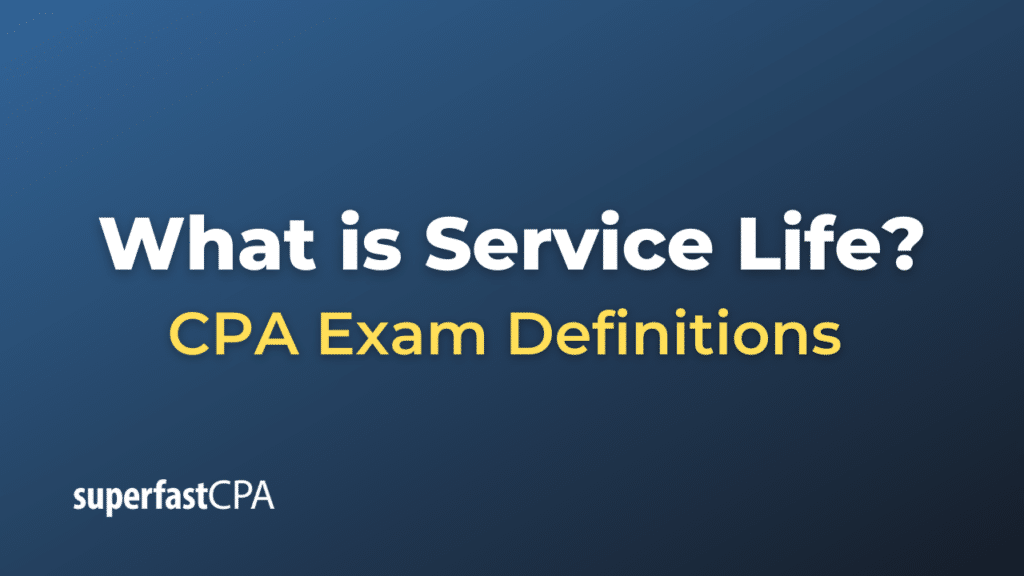Service Life
“Service life” refers to the period during which an asset, especially a tangible asset, is expected to be usable, functional, and capable of operating at its designated capacity without any major repairs or overhaul. It does not necessarily represent the total lifespan of an asset but rather the duration it can efficiently serve its intended purpose.
Several factors can influence the service life of an asset:
- Wear and Tear: Regular use of an asset will cause it to wear down over time.
- Technological Obsolescence: Newer, more advanced technologies can render older assets obsolete, even if they’re still functional.
- Economic Factors: It might become uneconomical to operate older assets due to increasing maintenance costs or decreasing efficiency.
- Regulations and Standards: Changes in regulations or industry standards might mean that an asset needs to be replaced before the end of its physical lifespan.
- External Factors: Environmental factors, misuse, accidents, or other external events can reduce an asset’s service life.
In accounting, the service life of an asset plays a key role in determining its depreciation schedule. Depreciation spreads the cost of tangible assets over their estimated service lives, reflecting the reduction in value as the asset is used over time.
For instance, a company might estimate that a machine will have a service life of 10 years, after which it would need major repairs or replacement. Even if the machine physically lasts for 15 years, the company would typically depreciate its cost over the 10-year service life.
Example of Service Life
Let’s consider a scenario involving a company that purchases a delivery truck.
Company: QuickDeliver, a delivery service company.
Asset: Delivery Truck
Purchase Price: $50,000
Estimated Service Life: QuickDeliver estimates that the delivery truck will have a service life of 5 years. After 5 years, they believe the truck will have undergone significant wear and tear from daily deliveries, making it less reliable and more costly to maintain.
Depreciation Method : Straight-line depreciation (This method divides the total depreciable cost by the asset’s service life to determine an annual depreciation expense.)
Residual Value (Salvage Value): At the end of its service life, QuickDeliver expects they could sell the truck for $10,000.
Annual Depreciation Calculation:
Depreciable Cost = Purchase Price – Residual Value
Depreciable Cost = $50,000 – $10,000 = $40,000
Annual Depreciation = Depreciable Cost / Service Life
Annual Depreciation = $40,000 / 5 years = $8,000 per year
Outcome:
Every year for the next 5 years, QuickDeliver will record a depreciation expense of $8,000 for the delivery truck. At the end of the 5-year service life, the book value of the truck will be its residual (or salvage) value of $10,000. This accounting treatment reflects the truck’s reduction in value as it approaches the end of its estimated service life.
This example demonstrates how the concept of service life is applied in accounting to spread the cost of an asset over its useful or service period.













